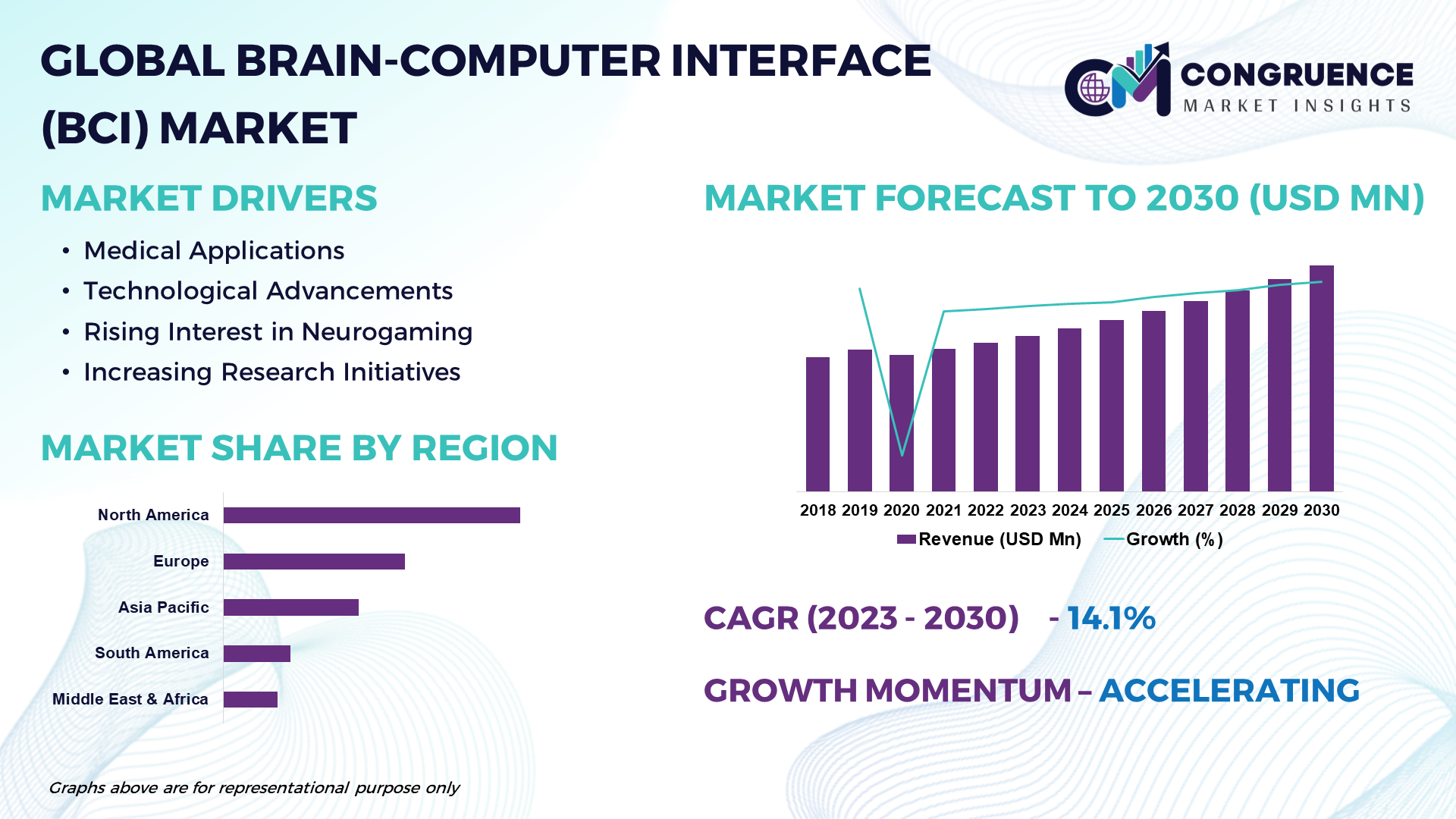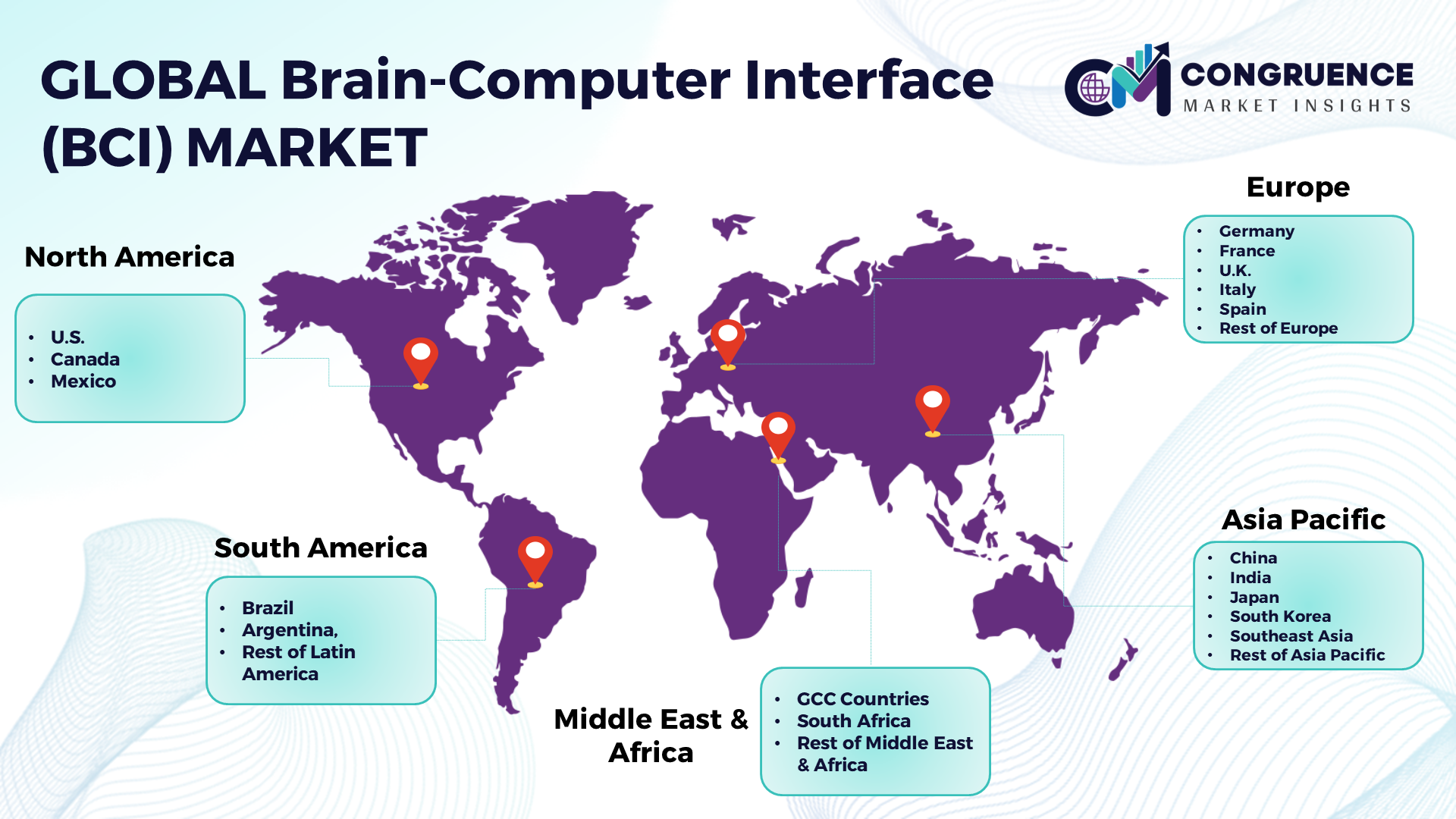Reports
The Brain-Computer Interface (BCI) market represents a revolutionary frontier in technology, bridging the gap between the human brain and computing systems. This market encompasses various types of BCIs, including invasive, non-invasive, and partially invasive, offering a spectrum of applications from healthcare to gaming and entertainment. As a key enabler of direct communication between the brain and external devices, BCIs hold immense potential for transforming industries and enhancing the quality of life for individuals with physical limitations. The market is witnessing significant growth, driven by advancements in neurotechnology, increasing research and development activities, and a growing demand for innovative healthcare solutions. With a projected CAGR of 14.1% from 2023 to 2030, the Global Brain-Computer Interface Market anticipates substantial expansion, creating opportunities for breakthroughs in communication, control, and human-computer interaction.

Brain-Computer Interface (BCI) Market Major Driving Forces
Medical Applications: The use of BCIs in healthcare, including neurological rehabilitation and assistive technology for individuals with disabilities, is a major driver for the market's growth.
Technological Advancements: Ongoing advancements in BCI technologies, such as improved signal processing algorithms and the development of more user-friendly interfaces, contribute to the market's expansion.
Rising Interest in Neurogaming: The integration of BCIs in gaming and entertainment, offering immersive experiences and novel control mechanisms, is gaining popularity and driving market growth.
Increasing Research Initiatives: Growing investments in research and development, both in academia and industry, foster innovation in BCI technologies and applications.
Brain-Computer Interface (BCI) Market Key Opportunities
Expanded Healthcare Applications: Opportunities abound for the incorporation of BCIs in healthcare, including diagnosis, treatment, and monitoring of neurological conditions, as well as advancements in brain-controlled prosthetics.
Integration with Augmented Reality (AR) and Virtual Reality (VR): The integration of BCIs with AR and VR technologies presents exciting opportunities for enhanced immersive experiences and interactive simulations.
Communication and Control Solutions: BCIs offer potential breakthroughs in communication for individuals with speech and motor impairments, providing them with a direct interface for expressing thoughts and controlling external devices
Brain-Computer Interface (BCI) Market Key Trends
· Miniaturization of BCI Devices: The trend towards developing smaller, more portable BCI devices for everyday use, enhancing accessibility and integration into daily life.
· BCIs for Mental Health Monitoring: The exploration of BCIs for mental health applications, including stress monitoring, mood regulation, and early detection of neurological disorders.
· Hybrid BCIs: The development of hybrid BCIs that combine multiple neuroimaging techniques, offering more comprehensive and accurate brain activity measurements.
· Brain-Controlled Prosthetics: Advancements in brain-controlled prosthetics, allowing users to regain more natural and intuitive control over artificial limbs and devices.

Market Competition Landscape
The global Brain-Computer Interface market is marked by intense competition among key players striving to innovate and advance the field. Companies focus on technological breakthroughs, collaborations, and partnerships to strengthen their market presence. Notable players in the market include:
· Neuralink Corporation
· Emotiv Inc.
· G.tec medical engineering GmbH
· BrainCo Inc.
· Mind Solutions Inc.
· OpenBCI
· Advanced Brain Monitoring, Inc.
· Cortech Solutions, Inc.
· ANT Neuro B.V.
· MindMaze SA
These companies drive the industry forward through continuous research, development, and commercialization of cutting-edge BCI technologies.
|
Report Attribute/Metric |
Details |
|
Base Year |
2022 |
|
Forecast Period |
2023 – 2030 |
|
Historical Data |
2018 to 2022 |
|
Forecast Unit |
Value (US$ Mn) |
|
Key Report Deliverable |
Revenue Forecast, Growth Trends, Market Dynamics, Segmental Overview, Regional and Country-wise Analysis, Competition Landscape |
|
Segments Covered |
· By Type (Invasive, Non-Invasive, Partially Invasive) · By Application (Healthcare, Gaming and Entertainment, Communication and Control, Smart Home Control, Others) · By Technology (Electroencephalography (EEG), Magnetoencephalography (MEG), Functional Magnetic Resonance Imaging (fMRI), Near-Infrared Spectroscopy (NIRS), Others) |
|
Geographies Covered |
North America: U.S., Canada and Mexico Europe: Germany, France, U.K., Italy, Spain, and Rest of Europe Asia Pacific: China, India, Japan, South Korea, Southeast Asia, and Rest of Asia Pacific South America: Brazil, Argentina, and Rest of Latin America Middle East & Africa: GCC Countries, South Africa, and Rest of Middle East & Africa |
|
Key Players Analyzed |
Neuralink Corporation, Emotiv Inc., G.tec medical engineering GmbH, BrainCo Inc., Mind Solutions Inc., OpenBCI, Advanced Brain Monitoring, Inc., Cortech Solutions, Inc., ANT Neuro B.V., and MindMaze SA |
|
Customization & Pricing |
Available on Request (10% Customization is Free) |
